Scenes from the New York Tombstone Trade
by Kyle Chayka
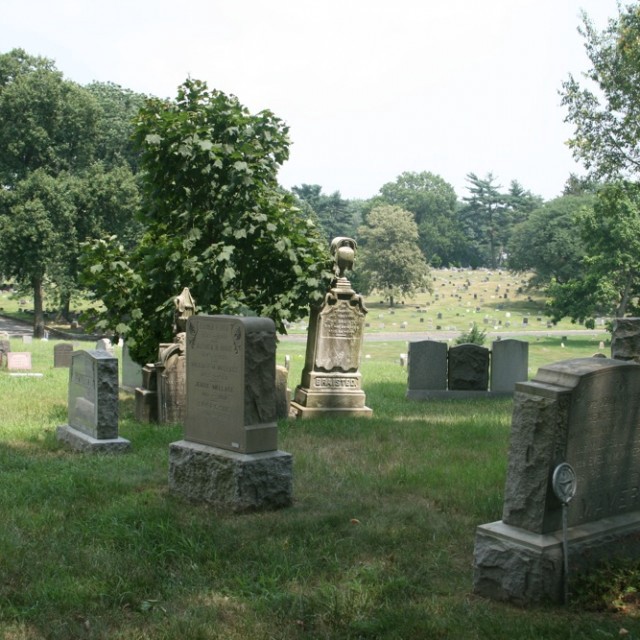
If you take a train out to the Broadway Junction station, turn onto Conway Street, go up the hill, and keep walking until the patchy Brooklyn sprawl dissolves into a field of gravestones, you’ll find yourself deep in the Cemetery of the Evergreens, one of the vast commercial graveyards established in the outer boroughs following the 1847 Rural Cemetery Act. The bodies of over half a million dead New Yorkers rest beneath the hunks of granite and marble which seem stuck in the ground at random, like a handful pebbles tossed into the grass.
Not a few of the monuments have been supplied by Carbone Memorials, a small, family-owned store down the street that has been selling gravestones for nearly a century. When I visited recently, blank gravestones were arranged in neat lines for customers to peruse inside the store, which felt surprisingly airy, even though it sits in the shadow of the rumbling edifice of a subway platform. Stacks of older stones languished outside, the names carved into their edifices decaying into illegibility.
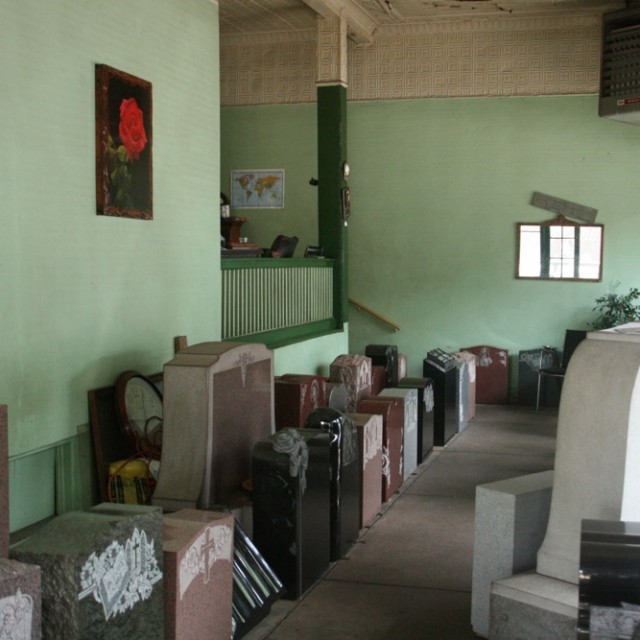
Vincent Carbone didn’t set out to be in a third-generation death salesman. In fact, his parents discouraged him from joining the family business, which his grandfather and great uncle, two stonemasons who emigrated from Italy, started in 1917. “They said don’t come around, and sent me to school,” he told me. But after a tour with the military during the Vietnam War and odd jobs as a bartender and a postman, “my father thought it would be best that I come here, and I did,” Carbone said. That was 44 years ago. Carbone is now a sturdily built 72-year-old with shining brown eyes, retreating grey hair, closely cropped facial hair, and an accent that betrays a childhood in Queens.
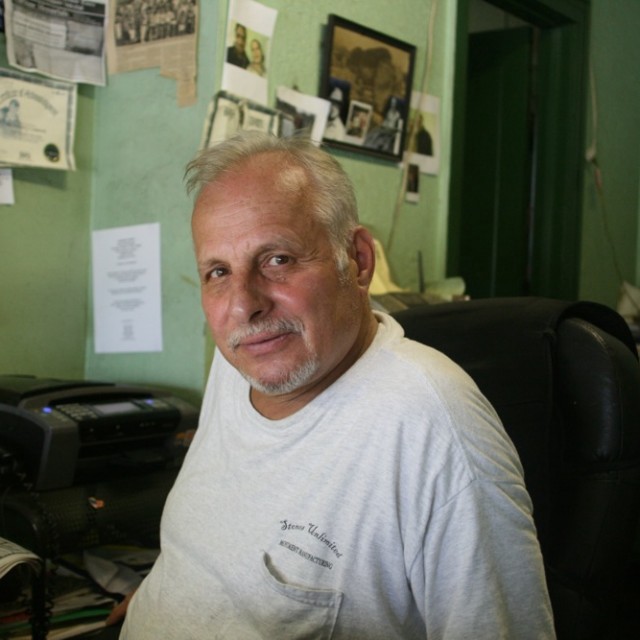
Vincent took over the store in 1996, a few years before his father passed away. “He didn’t have no confidence in me, but I did it,” Carbone said. “My father used to like power lunches — he didn’t eat, he’d knock down a few drinks, come back here. I used to run away from him.” The only other employee today is his assistant Frances Eames, who runs the office’s sole computer, a laptop stashed behind a desk. “I still don’t understand it,” he said. “It’s not me. I can sell and be good to people; she’ll do the rest.” When I arrived, Carbone was alone in the office, tending to a phone that rang loudly in the still air a few times over the course of several hours. “It’s not like a candy store with people coming in and out. You have to be here when someone comes, otherwise your competitor’s gonna get it,” he explained. Carbone comes in six or seven days a week. “On Sunday, I can read the papers here, waiting,” he said.
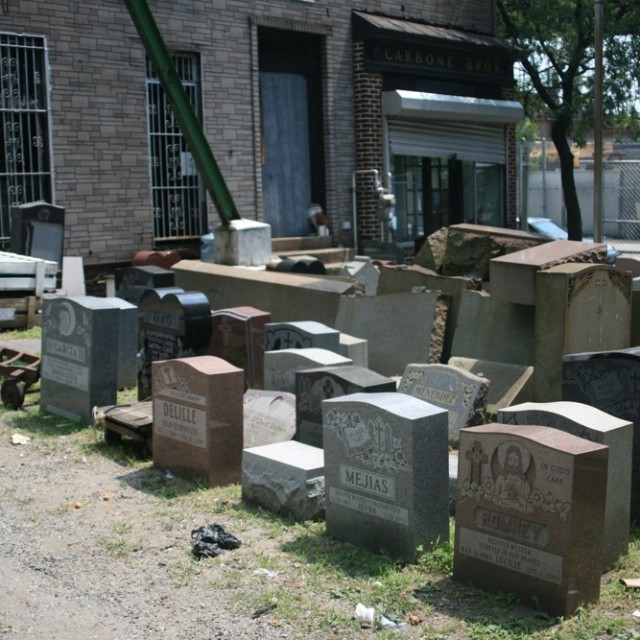
When Evergreens sells an open plot, which runs around $5,000 before burial fees, the staff will recommend a few different places to buy stones, including Carbone’s. The store’s average monument costs around $2,000. “You buy a TV for $2,000 and it’s only going to last you a few years,” Carbone said. “This lasts forever.” Options like engraving a photo onto the surface of the stone or getting it cut into the silhouette of a dolphin cost extra. (“A lot of women like dolphins,” Carbone said.) There are also less expensive options. “If people can’t afford something big we have something small and we give it to them,” Carbone said. “Even though it’s small, it’s still gonna be good. You gotta take care of the living first.” A few of the stones standing in the shop have names carved into them, but the buyers have stopped paying monthly installments so the stones sit, unused. Carbone is patient. “Some people, they leave the country; we’re here ten years later waiting for them.”
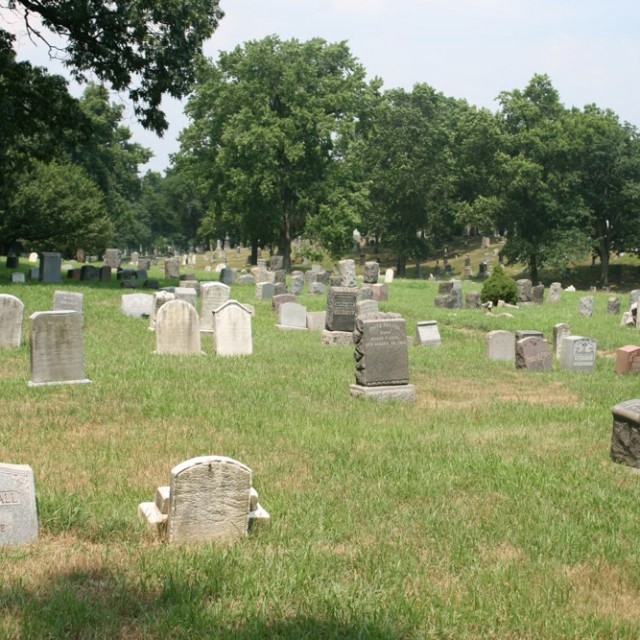
Even a business as seemingly dependable as selling gravestones can change over time. The rise of cremation is hurting Carbone’s bottom line: The Cremation Association of North America predicts that by 2025, over half of all deceased in the U.S. will be cremated rather than buried. Simultaneously, up in the cemetery, “they’re running out of space,” Carbone said, which is pushing up prices, lowering demand for plots and, in turn, gravestones.
Still, Carbone is relatively unconcerned. “There are other cemeteries. Canarsie, Cypress Hills,” he said. “We do a lot of work in New Jersey because the graves are a little cheaper there.” I asked Carbone if he thought the old-school block of granite or marble would ever go out of fashion or become irrelevant. “How can it?” he shot back. “The caves, the pyramids — we put our names down, pictures, anything. It’s been going on since the beginning of time.”
Kyle Chayka is a freelance technology and culture writer living in Brooklyn.
